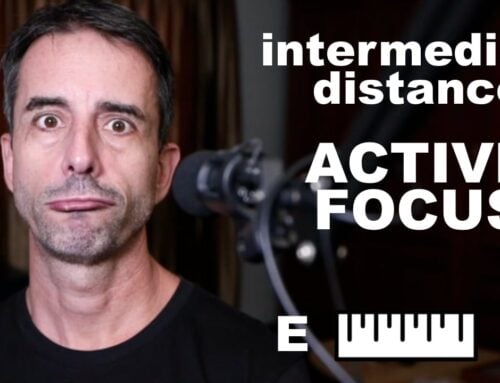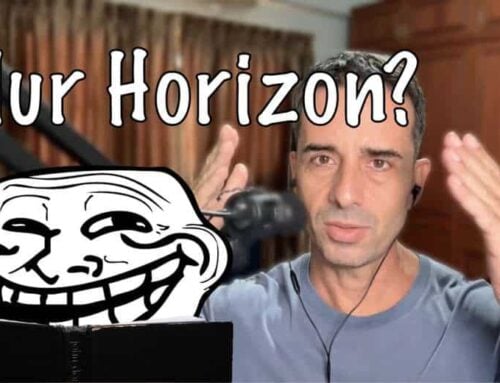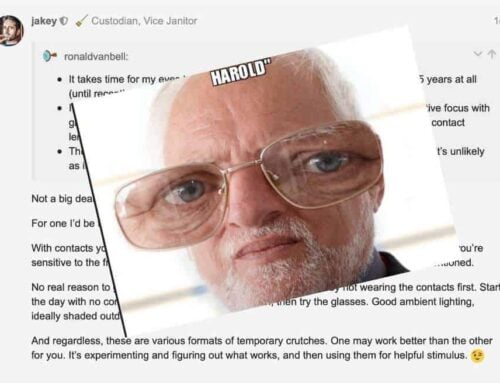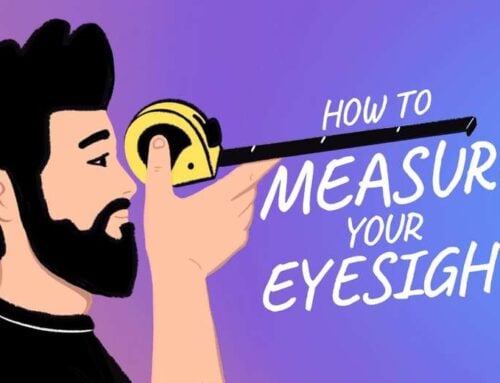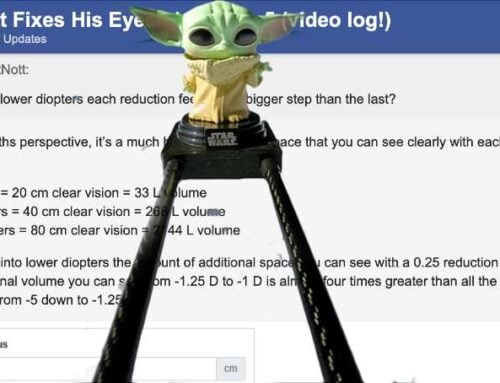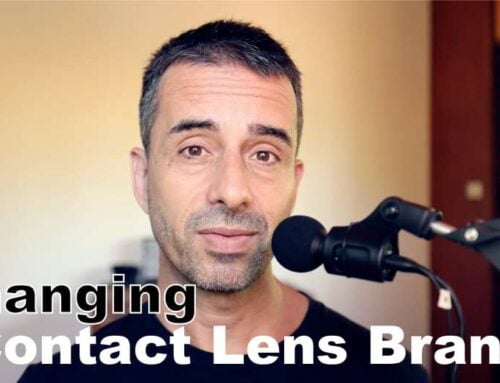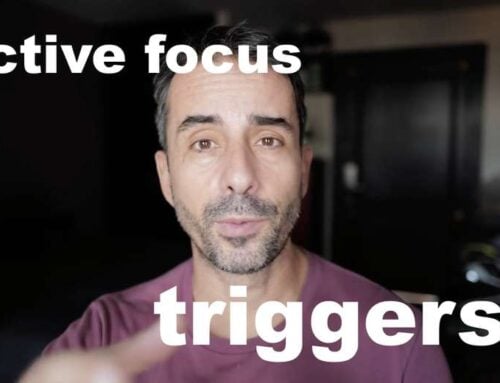There’s a long-ish thread in the forum right now, titled “first normalized experiences, can anyone relate”.
Topic of the thread, uncomfortable blur when moving from the full prescription to the first reduced distance prescription (the “normalized” prescription).
It’s not always easy to relate the subject of feelings, emotional subtext, into words that translate to others. What might be uncomfortable blur to one person, is just a welcome challenge to the next person. It took me some years to start working out troubleshooting methods and ways to relate to students meaningfully, when it comes to the topic of blur discomfort.
Let me share with your years of collecting insights, in an easy post:
Blur should never feel plainly uncomfortable.
If you do it correctly, a prescription change doesn’t change how you see. It just reduces the distance to where you start to experience blur. I call it the “diopter bubble”, because diopters are all about enlarging or shrinking the bubble of clear vision that you experience.
To work on your computer, you just need a small bubble. Shouldn’t be uncomfortable, since you can see clearly to your screen.
Outdoors, for distance vision, you need a larger bubble. It should again not be uncomfortable. You just make a conscious choice as to what distance you want to start experience some degree of blur.
I found that the experience of “discomfort” boils down to two distinct experiences:
1. Too small of a diopter bubble.
If you get blur at say, 10 meters but your eyes need 15 meters of vision to navigate your surroundings comfortably, you’ll always feel uncomfortable, since too much of your environment will be in blur. You want to assess whether you discomfort is based on not getting enough distance vision, first.
2. A change along multiple dimensions of your focal plane.
Let me explain this one. In the forum topic, we have the following change:
Previous prescription – Left: -4.50 Right : -4.75 CYL: -0.25 -0.25
New normalized prescription – Left: -4.00 Right: -4.00
There’s a bit of a problem with this, as we are “warping” the diopter bubble. Instead of making a linear change, either on spherical reduction, OR astigmatism reduction, OR equalizing left vs. right eye correction, we did them all at once. That’s three sets of changes at one time.
If you imagine your glasses creating a bubble of clear vision, spherical reduction will make the bubble smaller. But changing the ratio between left and right eye correction changes part of the bubble only. You’re making your eyes and visual cortex adapt to a stimulus where one eye is challenged more than the other.
This is fine if you are doing it on it’s own. But if you combine the spherical reduction with also a ratio change, you’re multiplying the challenges.
Now if you also add to this a change on the cylinder plane (astigmatism), you have three sets of changes. Things are getting complicated.
I always say, pick one challenge. Pick one goal. Which do you want?
Pick astigmatism, or equalization, or spherical reduction. It’s going to be plenty of stimulus for your brain to work out, and it’ll take some time. But it won’t be uncomfortable, it’ll just feel challenging. I found over the years that students define uncomfortable the emotion that stems from the visual cortex struggling with the change in focal plane signal. Too many things changed all at one time.
This is not to say that this can’t be overcome. It’s just not really necessary or notably beneficial to create too many changes all at once.
So there we have it. Uncomfortable can usually be decoded to mean either a) not a large enough bubble of clear vision or b) too many changes to the existing prescription. Pretty self evident in hindsight, yes?
It took me years to figure this out, as many of these pretty simple concepts. That’s why, eye guru, and that’s why, student-only support forum. There are so many scenarios that happen to one person but not the next, that the program alone can’t possibly cover them all. So we do what applies to most people in the course, and then use the forum to sort out the individual challenges. Pretty good stuff!
I’ve got a huge backlog of improvement stories, interesting science, and odds and ends. I’m taking to posting some of them in Twitter, just to get more out. For example, atropine as a (stupid idea) for myopia prevention. Say hello to increased cataract risk. I just added a quick link to a few studies, some of them interesting, others just plain dumb. If you want quick tips, study links, and the occasional rant, lamentations, hints and other bits, follow me on the social thingie.
Also, we just broke through the 5,000 follower mark. Nice! And lots going behind the scenes, chatting with journalists and academics and journal publishers. Next year is going to start feeling the collective power of all of us who say, nope, lens sales propaganda. We are #endmyopia.
Cheers,
-Jake






